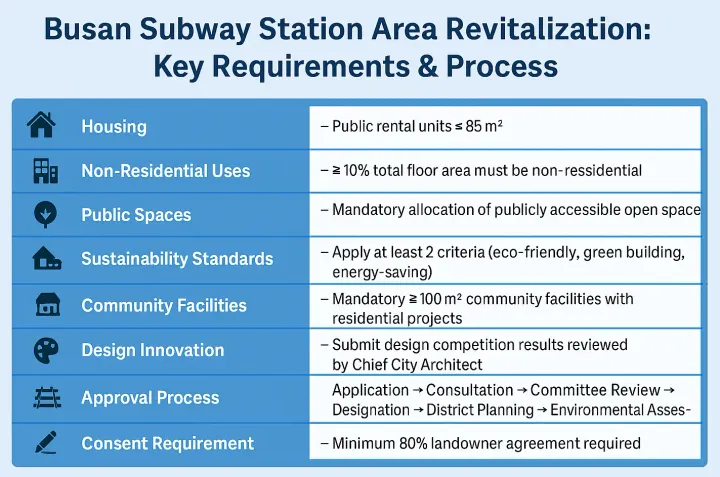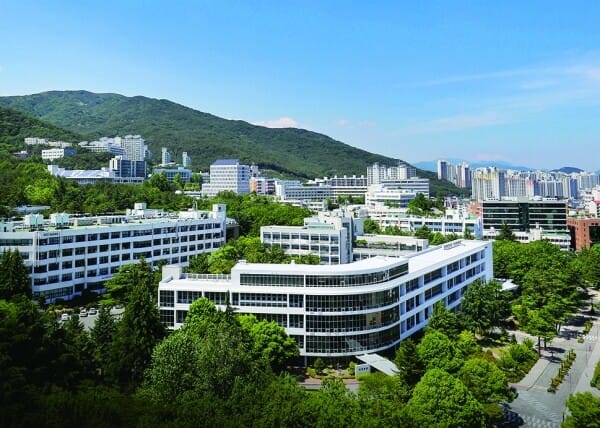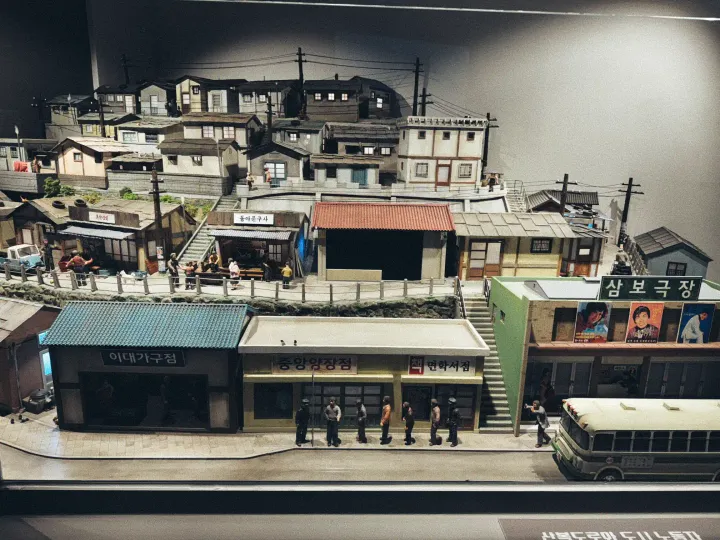Gadeokdo Airport and the High Cost of Rushing Infrastructure
Korea’s offshore Gadeokdo Airport project is on a tight schedule, but global precedents like Japan’s Kansai show the risks of building fast on uncertain ground.

BUSAN, South Korea — In the waters off the southern coast of South Korea, construction is underway on what promises to be one of the country’s most ambitious infrastructure projects in decades: the Gadeokdo New Airport. Envisioned as a critical transport and logistics hub serving the southeastern region, the offshore airport is slated to open by December 2029 — a politically and economically significant deadline that aligns with national development goals and regional aspirations.
Yet as the project enters the detailed design phase, questions are emerging over whether the government’s ambitious timeline is technically feasible. At the center of the controversy is Hyundai Engineering & Construction, the lead firm in the consortium awarded the project under a “turnkey” contract — a model that entrusts the contractor with both the design and construction responsibilities. Recently, the company has proposed extending the construction period from the contractually agreed 84 months to 108 months, citing engineering difficulties and site conditions.
The South Korean Ministry of Land, Infrastructure and Transport, along with local authorities in Busan, have rejected the request, asserting that the original timeline is both achievable and essential. The standoff has sparked a broader debate: are political deadlines outpacing geotechnical realities — and if so, at what long-term cost?
The Turnkey Trap?
The Gadeokdo New Airport project was awarded under a design-build turnkey contract, a method often used in megaprojects where speed, efficiency, and innovation are prioritized. Under this model, a single contractor is responsible for both designing and building the project — a consolidation intended to reduce bureaucratic delays and transfer technical risk away from the government.
South Korea’s Ministry of Land, Infrastructure and Transport (MOLIT) opted for the turnkey approach to fast-track the airport’s delivery. The tender documents clearly stipulated that the construction must be completed within 84 months, a timeline that would enable the airport to open by December 2029.
However, in early 2025, the lead contractor — a consortium headed by Hyundai Engineering & Construction — submitted a revised basic design proposal extending the required construction time to 108 months, citing additional ground improvement work and revised geotechnical assumptions. This request, made after securing the contract, has triggered sharp criticism from both government officials and engineering experts, who argue that it undermines the very intent of a turnkey contract.
“The whole point of turnkey is that the contractor factors in all the risks upfront — including unknowns related to site conditions,” said one public procurement expert familiar with the project. “If you change the timeline after the fact, it defeats the purpose of competitive design-and-build bidding.”
At the heart of the debate is whether the contractor's claim of unexpected technical challenges — such as the need for extended soil stabilization — justifies altering a core contractual term. For public stakeholders, the issue is not just about months lost, but about trust in procurement transparency and accountability.
The Missing Data: What’s Beneath the Surface?
Central to Hyundai E&C’s request for a longer construction timeline is its claim that additional time is required to stabilize the soft marine ground on which the airport will be built — a notoriously complex process in offshore engineering, especially when working with silty, compressible soils like those found off the coast of Gadeokdo.
However, a closer look at the contractor’s submission has raised eyebrows among government officials and independent engineers. According to the Busan Metropolitan Government, Hyundai’s design proposal calculates a 17-month extension for ground consolidation in the airport’s eastern section — the area where the terminal and key facilities will be located. But notably, no new borehole data or site-specific geotechnical surveys were conducted in that very zone.
“This is the most critical area of the entire project — structurally and operationally,” said a senior city engineer familiar with the design review. “Making a claim for more time without additional site investigation undermines the credibility of the estimate.”
Instead of performing new borehole drilling, the consortium relied on existing government-provided data from the basic planning phase — which, while extensive, may not reflect the full variability of the subsurface conditions. Experts warn that without up-to-date subsurface information, construction assumptions may be based more on theoretical modeling than empirical verification.
Further complicating matters, Hyundai claims it was unable to conduct offshore drilling in the eastern section due to local fishermen’s protests — a valid logistical concern, but one that raises questions about project readiness and risk mitigation planning at the bidding stage.
The dispute over what was — and wasn’t — known about the seabed echoes a recurring theme in infrastructure failures worldwide: when foundational data is missing or flawed, timelines slip, costs rise, and accountability blurs.
The Kansai Airport Precedent
The construction of Gadeokdo New Airport bears notable similarities to one of Asia’s most ambitious infrastructure projects: Kansai International Airport in Japan. Built on a man-made island in Osaka Bay, Kansai was the world’s first full-scale offshore airport when it opened in 1994, and it has since become a critical case study in the engineering and financial risks associated with large-scale marine reclamation.
The project began in 1987 and took approximately seven years to complete. Engineers created the island by dredging and depositing approximately 180 million cubic meters of fill material onto a seabed composed primarily of thick, soft alluvial clay — a geologically unstable base with high compressibility. Despite efforts to improve ground stability through sand drains and preloading techniques, the artificial island began to settle much more than anticipated, sinking more than 12 meters since construction began — far exceeding early forecasts.
This ongoing subsidence has had lasting implications. Continuous elevation adjustments and reinforcement work have been necessary to maintain runway integrity and terminal functionality. Reports indicate that Japan's Ministry of Land, Infrastructure, Transport and Tourism has committed billions of yen to long-term maintenance and monitoring, making Kansai Airport one of the most expensive infrastructure projects in the country’s history.
While Kansai has remained operational and even expanded, the settlement issues underscore the challenges of building on soft marine ground. The scale and complexity of the geotechnical engineering required — especially in fully offshore environments — make accurate subsurface investigation and conservative design assumptions essential.
Gadeokdo, like Kansai, involves offshore land reclamation in an area known for sediment-rich seabeds. The similarities raise questions about whether lessons from Kansai’s experience — particularly the need for comprehensive site investigation and realistic timeline planning — have been fully absorbed into the current project framework. Unlike Kansai, which had extensive soil testing and multiple international reviews, Gadeokdo’s eastern site reportedly lacks updated borehole data, despite being earmarked for core airport infrastructure.
While Gadeokdo’s outcome remains to be seen, Kansai International Airport offers a precedent that highlights both the technical difficulty and long-term risks of building critical infrastructure on the sea.
Deadline vs Durability
As of 2025, South Korea’s Gadeokdo New Airport project faces a defining moment. The airport, planned as a transformative hub for the country’s southeastern region, is officially scheduled to open in December 2029 — a date enshrined in law and repeatedly reaffirmed by national and local authorities. However, that timeline is now under strain following a proposal by the lead contractor, Hyundai Engineering & Construction, to extend the construction period from 84 months to 108 months.
The request, submitted alongside the project’s basic design plan, has intensified a confrontation between engineering assessments and political commitments. Hyundai cited technical grounds for the delay — including additional time required for soil stabilization and underwater retaining structures — but the Ministry of Land, Infrastructure and Transport, as well as the Busan city government, rejected the proposal, reiterating that the 2029 opening date remains non-negotiable.
This tension underscores a recurring dilemma in major infrastructure delivery: the conflict between fixed political deadlines and evolving engineering realities. In the case of Gadeokdo, the pressure to meet the 2029 goal is amplified by past delays in regional airport development and by the project’s symbolic importance. In 2021, South Korea passed a special law to fast-track approvals and bypass typical feasibility steps — a move designed to prevent further postponements.
However, as the project progresses into full-scale construction planning, new geotechnical uncertainties have surfaced. Key portions of the site — particularly on the eastern side, where core airport facilities are planned — lack updated borehole surveys. This omission has raised questions about whether the construction timeline was underestimated from the outset, and whether sufficient risk allowances were built into the bidding and design process.
Globally, infrastructure projects that prioritized speed over foundational certainty have often faced higher long-term costs. In Japan, the offshore Kansai International Airport — built under similar conditions — has required continuous reinforcement due to faster-than-expected ground settlement. Closer to home, Korea’s own Four Major Rivers Project (2009–2012) encountered criticism for environmental damage and costly retrofits after expedited timelines led to insufficient planning.
In this context, Gadeokdo now stands at a crossroads. It is no longer a question of whether the airport will be built — construction is already underway. The issue is how well it will be built, and at what trade-offs. The government's next steps will likely shape not only the physical structure of the airport, but also the public’s confidence in Korea’s ability to manage complex national projects under the weight of political timelines.
The Hidden Cost of Speed
Accelerating construction timelines in large-scale infrastructure projects often appears efficient on the surface. However, as global precedent shows, rushed execution can lead to disproportionate long-term costs — particularly in technically complex environments like offshore airports.
In the case of Gadeokdo, the government’s insistence on completing the airport within 84 months may help achieve short-term political and economic goals. But experts warn that compromising design flexibility or delaying ground investigations could lead to significantly higher expenditures in the future — especially if unforeseen structural issues emerge post-construction.
A relevant case in point is Japan’s Kansai International Airport, where rapid construction on soft marine clay led to unexpected levels of subsidence. Since its opening in 1994, the artificial island has sunk over 12 meters, requiring ongoing re-leveling of runways and terminal structures. As of recent estimates, Japan has spent billions of yen on maintenance and reinforcement, with some assessments suggesting that the cost of upkeep may eventually rival the initial construction budget.
Closer to home, South Korea’s Four Major Rivers Restoration Project offers a non-aviation example of speed-driven planning leading to long-term burdens. Critics point to increased sedimentation, damage to river ecosystems, and extensive repair costs as unintended consequences of its accelerated implementation.
Offshore airports, in particular, demand high levels of precision in geotechnical engineering, drainage design, and structural reinforcement. If construction is rushed before site conditions are fully understood or stabilized, the costs of retrofitting can be enormous — not only in terms of finances, but also in operational disruptions and public safety risks.
Furthermore, a fast-tracked timeline can limit the incorporation of more resilient or adaptive design features, such as advanced drainage systems or settlement monitoring infrastructure. These elements, while often omitted for budgetary or scheduling reasons, are critical to the long-term sustainability of a marine-based airport.
With Gadeokdo now locked into a 2029 opening target, the challenge for planners and policymakers is to ensure that today’s deadlines do not become tomorrow’s liabilities. Transparency in risk communication, allowance for engineering contingencies, and investment in robust long-term planning will be essential if the airport is to serve its intended role for decades to come — without becoming a recurring fiscal burden.
International examples like Kansai International Airport in Japan illustrate how early-stage underestimations — particularly in offshore geotechnics — can lead to long-term operational and financial strain. While Kansai remains functional, its history of continuous ground settlement and the costly reinforcements that followed serve as a sobering reminder of what can happen when timelines outpace soil science.
If Gadeokdo is to avoid a similar fate, the project must now transition from symbolic urgency to technical transparency. Independent engineering oversight will be vital, especially when core construction assumptions are being challenged. Areas of the site that have yet to undergo updated ground surveys should not proceed to full-scale development without a clear understanding of their geotechnical properties. Adjustments to the timeline, while politically sensitive, may be necessary if they are grounded in objective analysis. Furthermore, the financial evaluation of the project should account not only for the cost of construction but also for the airport’s long-term maintenance and resilience.



Comments ()